Hyper-V là một sản phẩm của Microsoft được sử dụng để thực hiện ảo hóa phần cứng. Trong bài viết hôm nay, hãy cùng Quantrimang tìm hiểu cách cài đặt Hyper-V trên Windows Server 2019 nhé!
Cài đặt Hyper-V trên Windows Server 2019
Yêu cầu hệ thống:
- Máy tính x64 (64-bit) và CPU có tính năng Intel XD bit (Execute Disable bit) hoặc AMD NX bit (No-Execute bit).
- Kích hoạt tính năng Intel XD bit hoặc AMD NX bit trên cài đặt BIOS.
Trên cài đặt CUI, thiết lập như sau.
1. Chạy Powershell với quyền admin và cài đặt Hyper-V.
Windows PowerShell
Copyright (C) Microsoft Corporation. All rights reserved.
# install Hyper-V with admin tools
PS C:\Users\Administrator> Install-WindowsFeature Hyper-V -IncludeManagementTools
Success Restart Needed Exit Code Feature Result
------- -------------- --------- --------------
True Yes SuccessRest... {Hyper-V, Windows PowerShell 用 Hyper-V ...
WARNING: You must restart this server to finish the installation process.
# restart computer to apply changes
PS C:\Users\Administrator> Restart-Computer -Force Trên cài đặt GUI, thiết lập như sau.
2. Chạy Server Manager và nhấp vào Add roles and features.
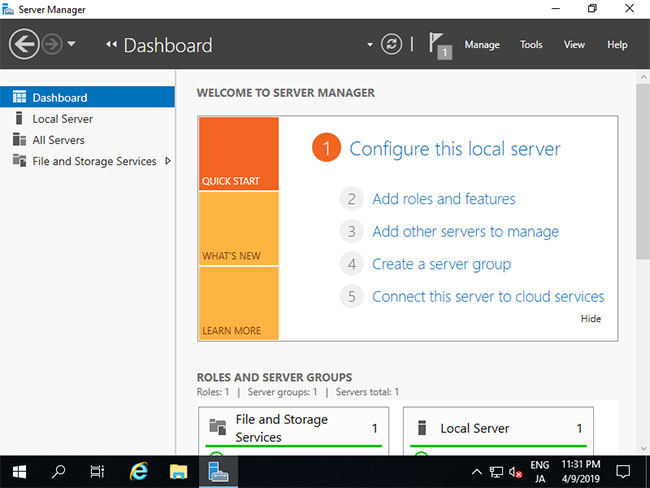
3. Nhấp vào Next.
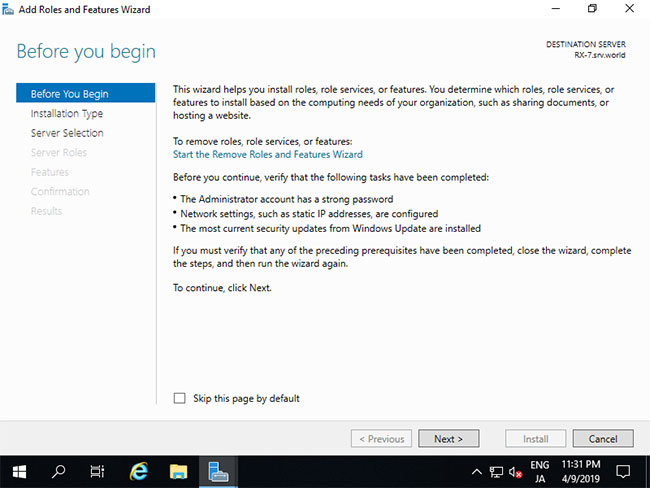
4. Chọn Role-based or feature-based installation.
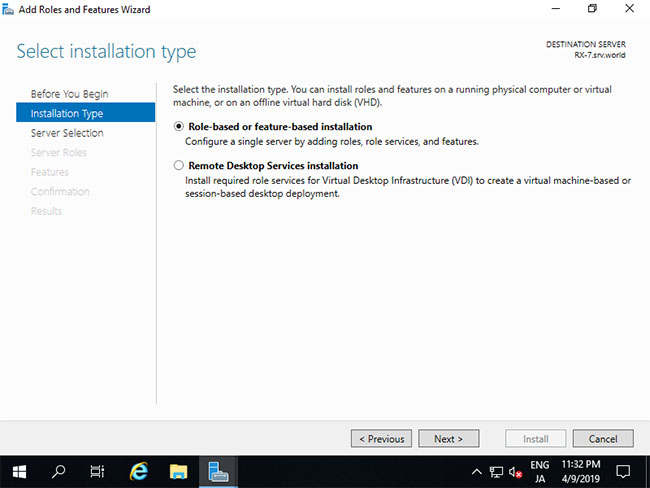
5. Chọn host bạn muốn thêm các service.
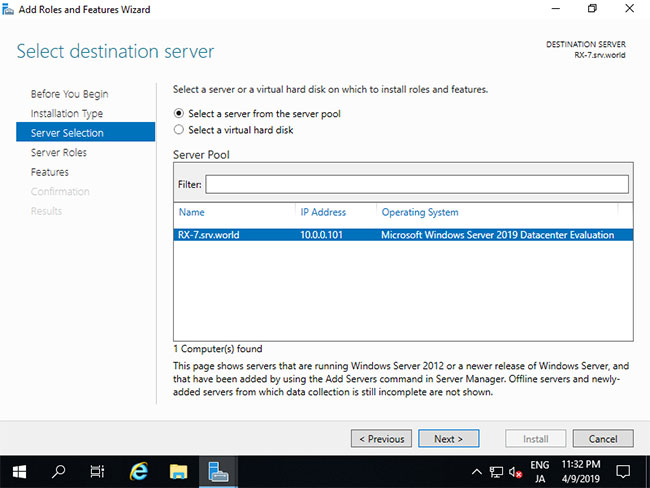
6. Tích vào hộp Hyper-V.
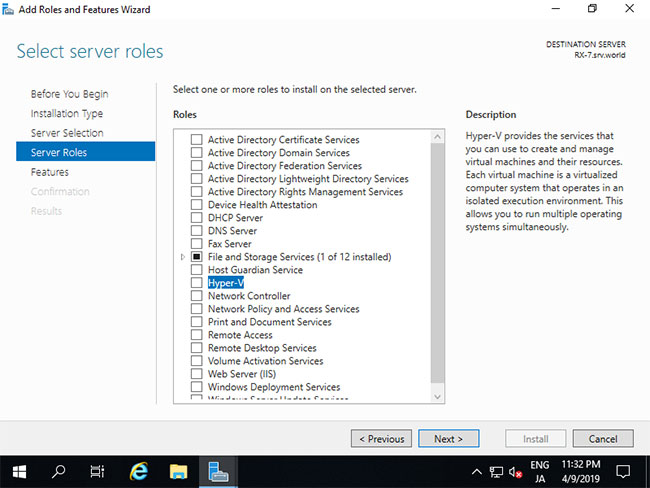
7. Các tính năng bổ sung được yêu cầu để thêm Hyper-V. Nhấp vào nút Add Features và chuyển sang Next.
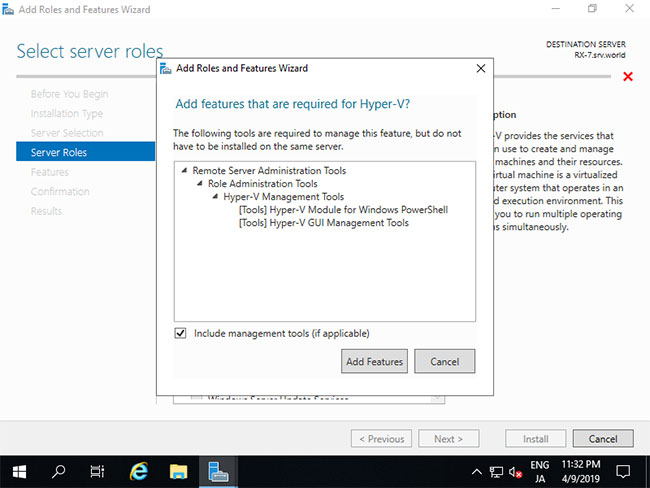
8. Nhấp vào nút Next.
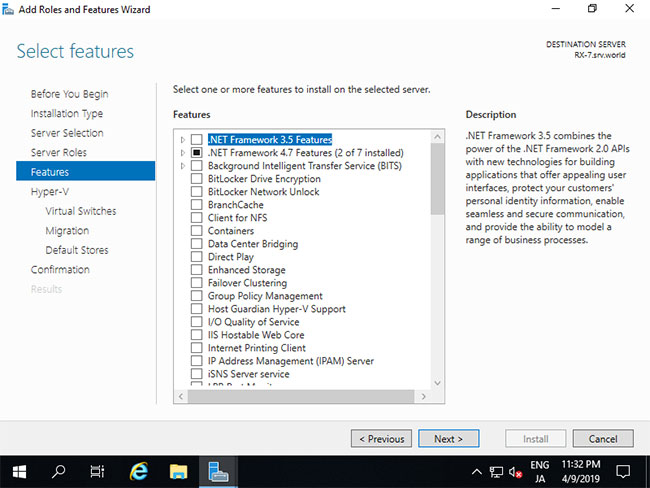
9. Nhấp vào nút Next.
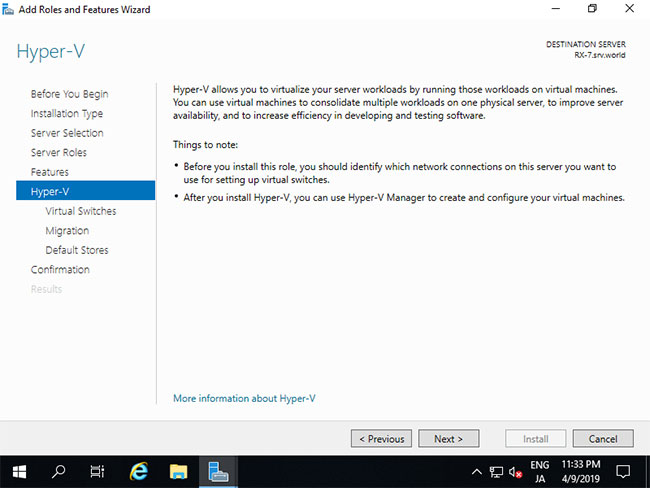
10. Đây là phần tạo Virtual Switches. Chọn một network adapter cho nó.
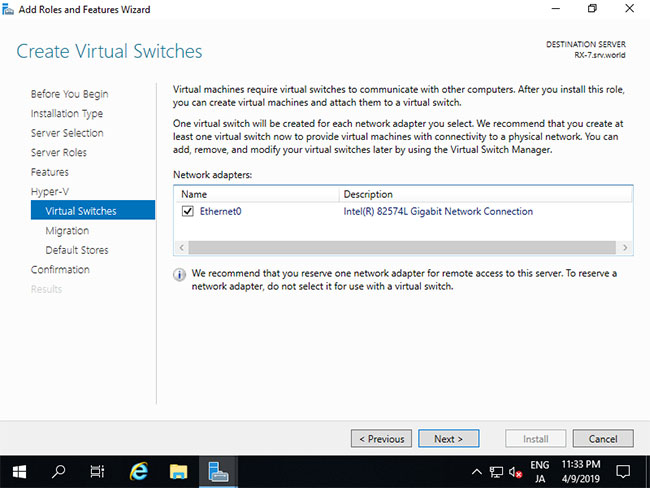
11. Đây là phần Virtual Machines Migration. Trong ví dụ này, hãy giữ nguyên tùy chọn mặc định và tiếp tục nhấn Next.
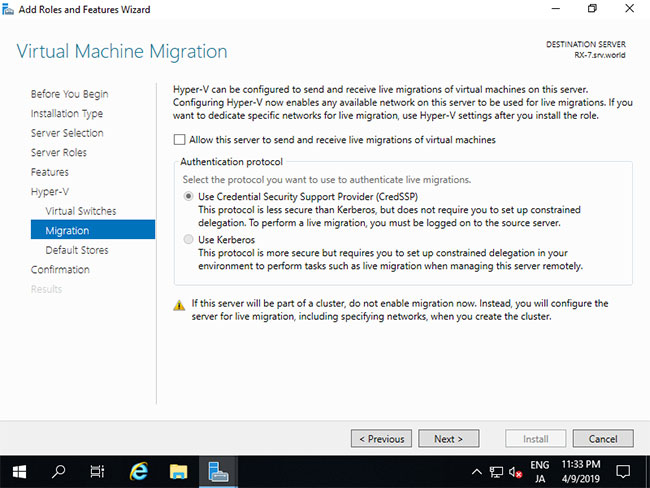
12. Đây là phần chỉ định vị trí cấu hình của máy ảo. Trong ví dụ này, hãy giữ nguyên tùy chọn mặc định và tiếp tục nhấn Next.
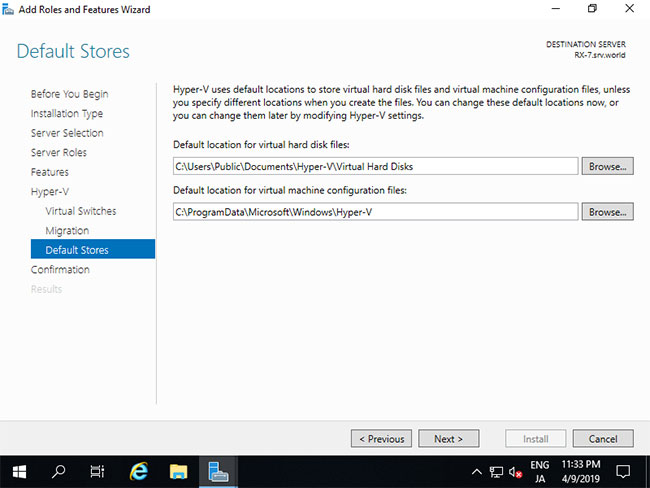
13. Nhấp vào nút Install để bắt đầu cài đặt.
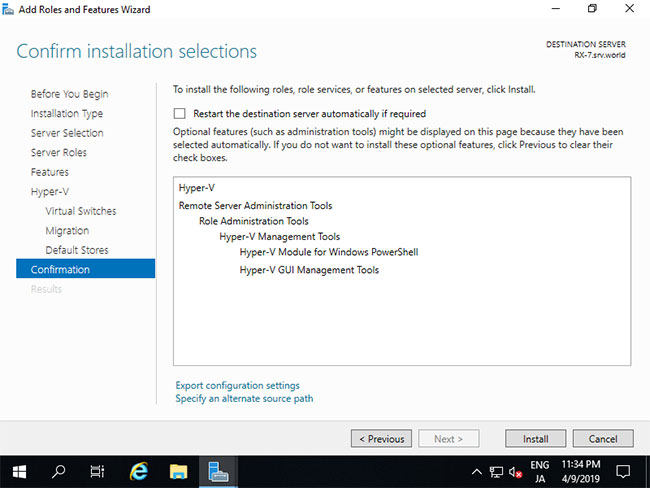
14. Sau khi kết thúc quá trình cài đặt, nhấp vào nút Close và khởi động lại máy tính.
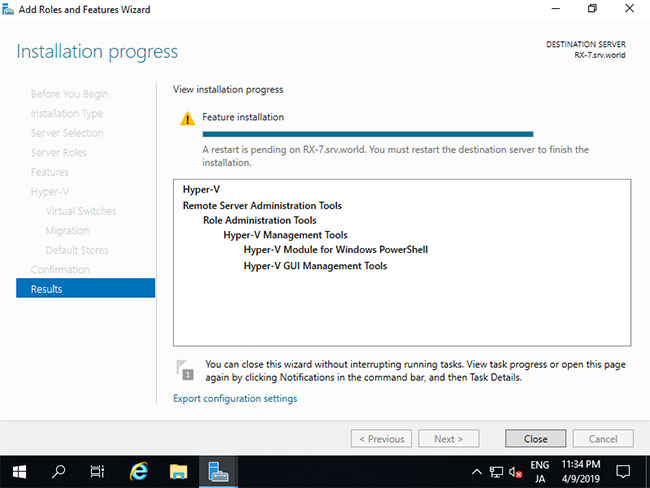
Tạo máy ảo
Trên cấu hình CUI, thiết lập như sau:
1. Chạy Powershell với quyền admin và cấu hình:
Windows PowerShell
Copyright (C) Microsoft Corporation. All rights reserved.
# confirm network adapter names
PS C:\Users\Administrator> Get-NetAdapter
Name InterfaceDescription ifIndex Status MacAddress LinkSpeed
---- -------------------- ------- ------ ---------- ---------
Ethernet0 Intel(R) 82574L Gigabit Network Conn... 6 Up 00-0C-29-C7-54-1A 1 Gbps
# create a virtul switch
PS C:\Users\Administrator> New-VMSwitch -Name "Bridge01" -AllowManagementOS $True -NetAdapterName "Ethernet0"
# confirm
PS C:\Users\Administrator> Get-VMSwitch
Name SwitchType NetAdapterInterfaceDescription
---- ---------- ------------------------------
Bridge01 External Intel(R) 82574L Gigabit Network Connection
# create a directory for virtual machines
PS C:\Users\Administrator> mkdir E:\Virtual_Machine
# set VM name and others
PS C:\Users\Administrator> $ParentDir = 'E:\Virtual_Machine'
PS C:\Users\Administrator> $VMName = 'Win2k19'
PS C:\Users\Administrator> $Switch = 'Bridge01'
# create a virtual machine
PS C:\Users\Administrator> New-VM -Name $VMName `
-MemoryStartupBytes 8GB `
-Generation 2 `
-NewVHDPath "$ParentDir\$VMName\$VMName.vhdx" `
-NewVHDSizeBytes 50GB `
-Path "$ParentDir\$VMName" `
-SwitchName $Switch
Name State CPUUsage(%) MemoryAssigned(M) Uptime Status Version
---- ----- ----------- ----------------- ------ ------ -------
Win2k19 Off 0 0 00:00:00 Operating normally 9.0
# change vCPU count
PS C:\Users\Administrator> Set-VMProcessor $VMName -Count 4
# add SCSI controler
PS C:\Users\Administrator> Add-VMScsiController -VMName $VMName
# set install image
PS C:\Users\Administrator> Add-VMDvdDrive -VMName $VMName `
-ControllerNumber 1 `
-ControllerLocation 0 `
-Path 'C:\Users\Administrator\Documents\Win2019_EN-US_190906-2324.rs5.iso'
PS C:\Users\Administrator> $DVDDrive = Get-VMDvdDrive -VMName $VMName
# set virtual DVD first boot device
PS C:\Users\Administrator> Set-VMFirmware -VMName $VMName -FirstBootDevice $DVDDrive
# start the virtual machine
PS C:\Users\Administrator> Start-VM -Name $VMName
# after this, refer to [13] to install OSTrên cấu hình GUI, thiết lập như sau.
2. Chạy Server Manager và mở Tools > Hyper-V Manager.
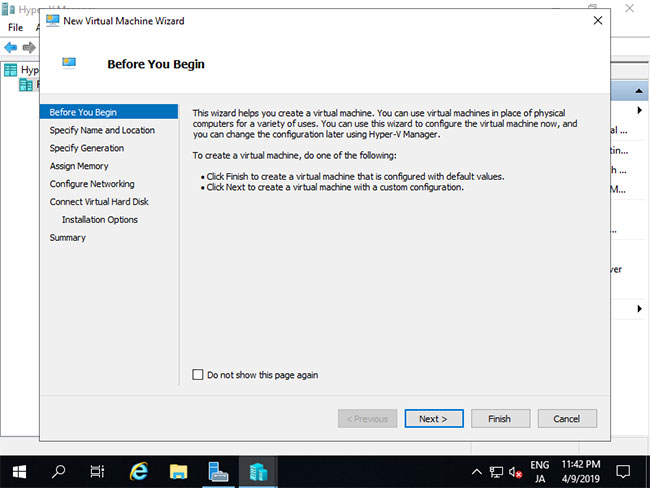
5. Nhập tên máy ảo. Bất kỳ tên nào cũng được.
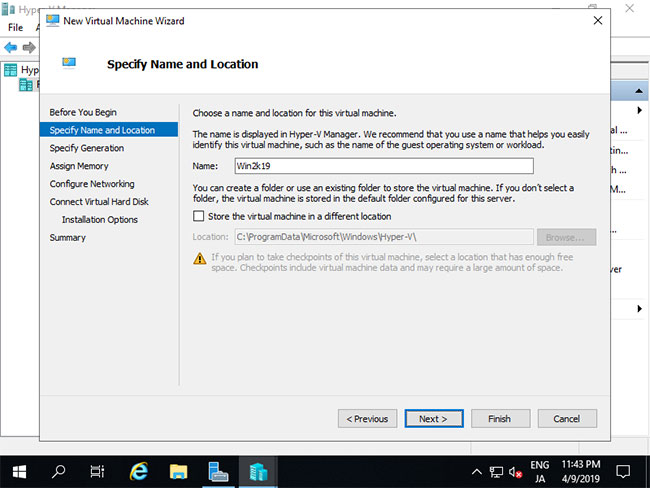
6. Chỉ định thế hệ máy ảo. Trong ví dụ này, hãy chọn Generation 2.
7. Chỉ định bộ nhớ cho máy ảo.
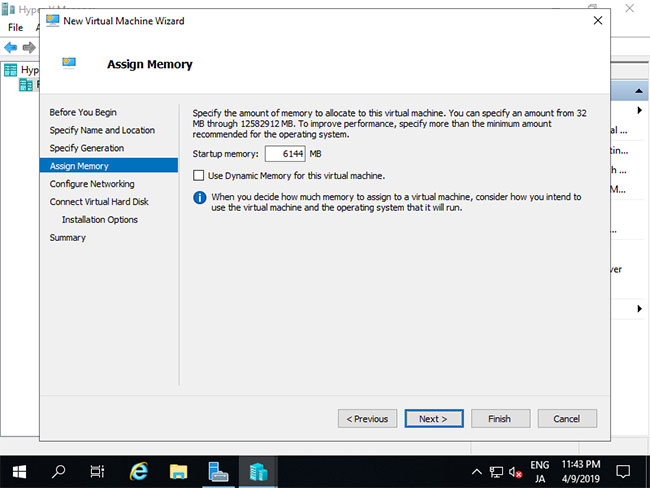
8. Chọn Virtual Switch để sử dụng kết nối mạng của máy ảo.
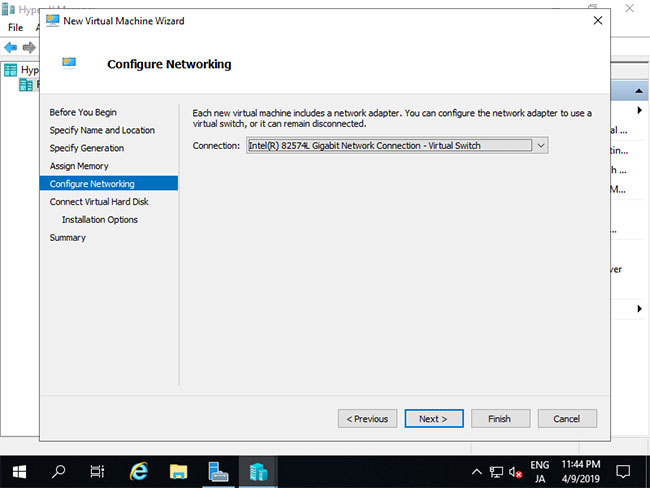
9. Cấu hình ổ cứng ảo. Đặt thông số bạn thích.
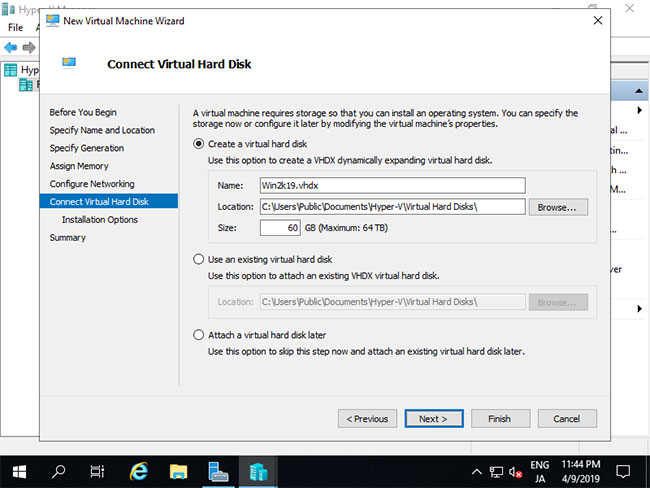
10. Chọn nguồn cài đặt GuestOS.
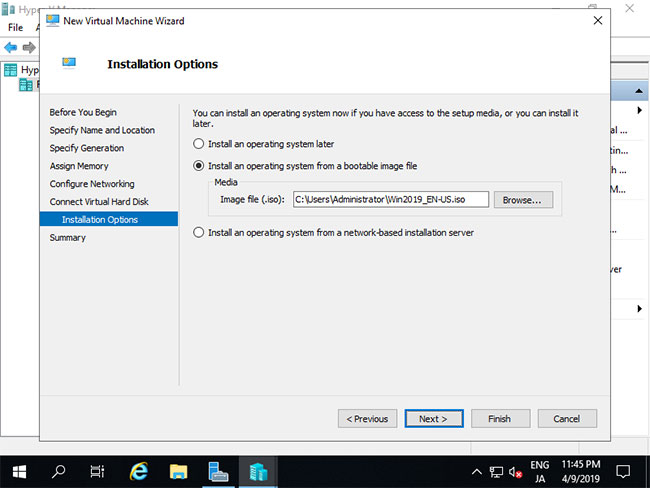
11. Nhấp vào nút Finish nếu mọi thứ OK.
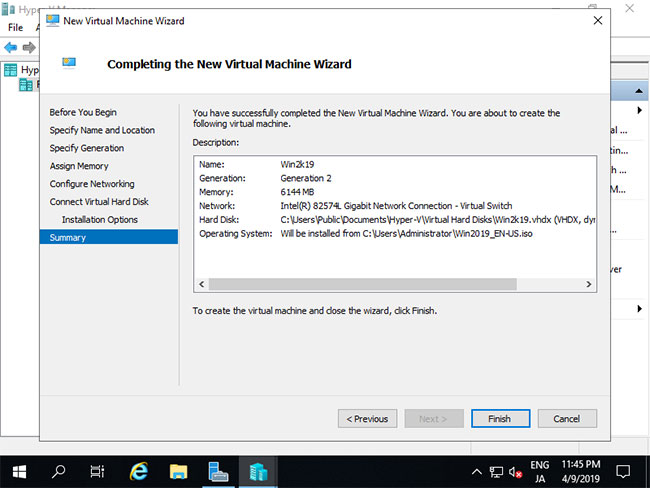
12. Máy ảo vừa được tạo. Để bắt đầu, hãy nhấp chuột phải vào nó và chọn Start.
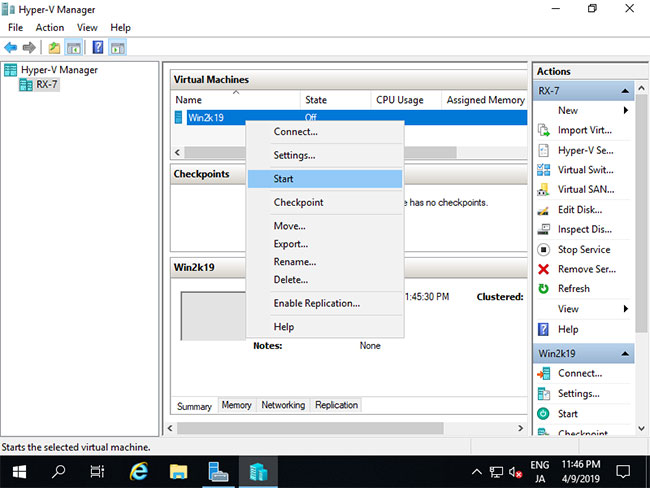
13. Để kết nối bảng điều khiển của máy ảo, hãy nhấp chuột phải vào nó và chọn Connect.
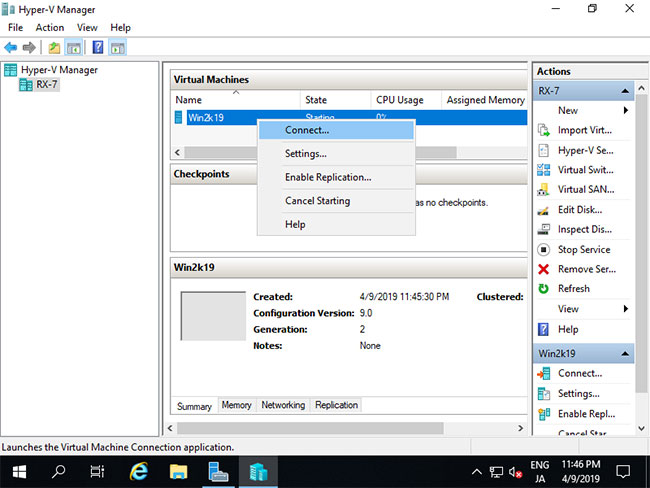
14. Cài đặt GuestOS theo quy trình thông thường.
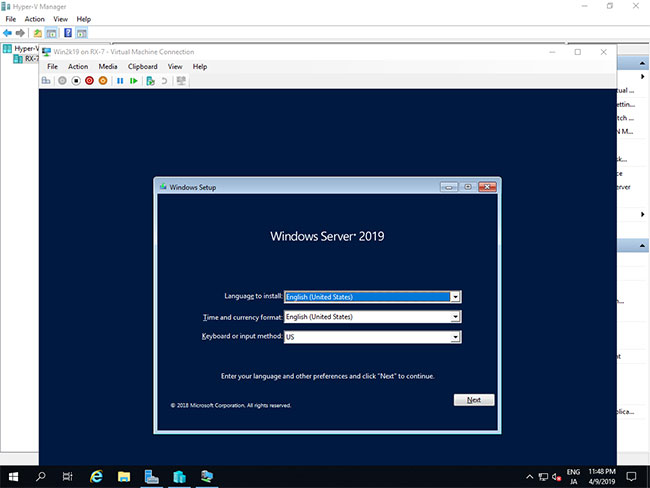
15. Quá trình cài đặt đã hoàn tất và máy ảo Windows Server hiện đang chạy.
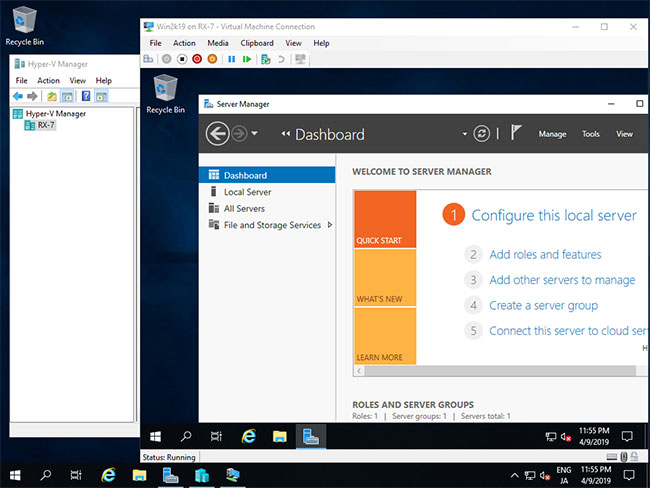
Chúc bạn thực hiện thành công!
Nguồn: quangtrimang.com

